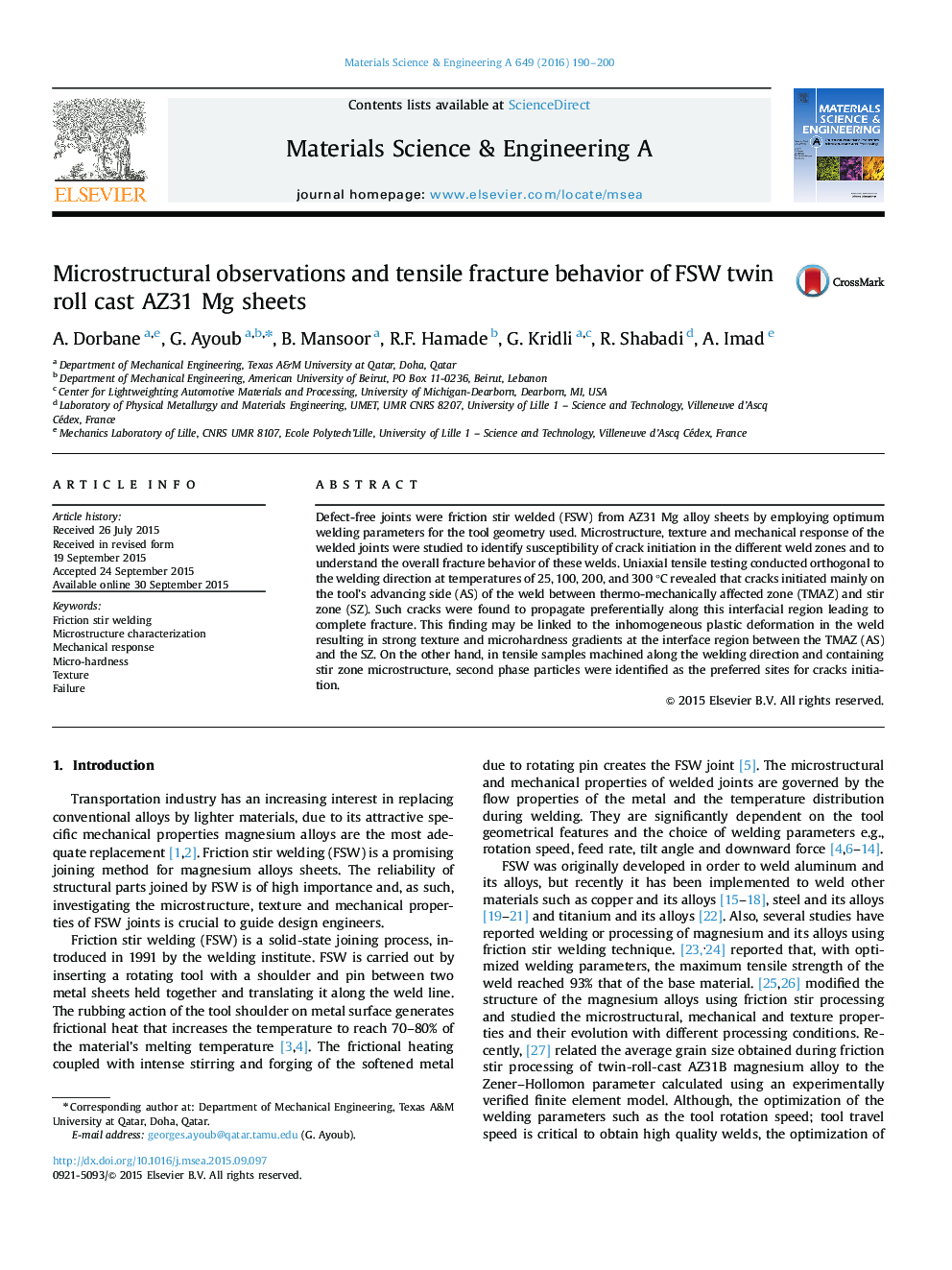| Article ID | Journal | Published Year | Pages | File Type |
|---|---|---|---|---|
| 7976501 | Materials Science and Engineering: A | 2016 | 11 Pages |
Abstract
Defect-free joints were friction stir welded (FSW) from AZ31 Mg alloy sheets by employing optimum welding parameters for the tool geometry used. Microstructure, texture and mechanical response of the welded joints were studied to identify susceptibility of crack initiation in the different weld zones and to understand the overall fracture behavior of these welds. Uniaxial tensile testing conducted orthogonal to the welding direction at temperatures of 25, 100, 200, and 300 °C revealed that cracks initiated mainly on the tool's advancing side (AS) of the weld between thermo-mechanically affected zone (TMAZ) and stir zone (SZ). Such cracks were found to propagate preferentially along this interfacial region leading to complete fracture. This finding may be linked to the inhomogeneous plastic deformation in the weld resulting in strong texture and microhardness gradients at the interface region between the TMAZ (AS) and the SZ. On the other hand, in tensile samples machined along the welding direction and containing stir zone microstructure, second phase particles were identified as the preferred sites for cracks initiation.
Keywords
Related Topics
Physical Sciences and Engineering
Materials Science
Materials Science (General)
Authors
A. Dorbane, G. Ayoub, B. Mansoor, R.F. Hamade, G. Kridli, R. Shabadi, A. Imad,
